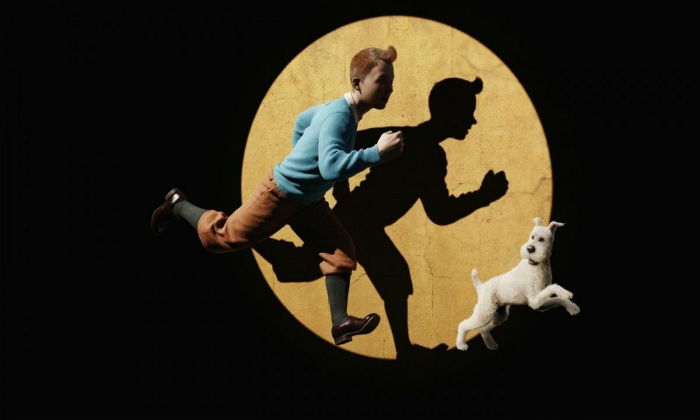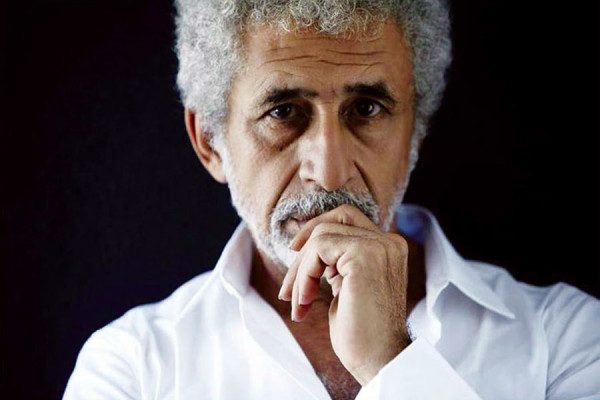The Tintin comic books created by Herge (Belgian artist Georges Remi) has more than 350 million copies of the books sold to date, and has been translated in more than ninety nine languages. Who better than Steven Spielberg, to create a film out of what can safely be called one of the most popular comics of the 20th century. Having experienced my childhood straddled over the US and India, I noticed that although the series is only marginally popular in the US, for readers around the world and especially India, Tintin is a comic book they discovered as kids, grew up with and continue to cherish, just like what Batman and Spider-Man are to Americans.
For those non-Tintin fanatics who may just be mildly familiar with the phenomenon, here is a memory refresh: Tintin, the hero, is a young reporter, accompanied in his adventures by his faithful dog Snowy through plots that range over various genres including political thrillers, science fiction, mystery and fantasy with their characteristic slapstick humour. Favorites from the cast are the cynical and brash Captain Haddock and the brainy but quite hard-of-hearing Professor Calculus.
Spielberg’s 2011 production The Adventures of Tintin (a.k.a.: The Adventures of Tintin: The Secret of the Unicorn) is based on three of the original comic books: The Crab with the Golden Claws, The Secret of the Unicorn and Red Rackham’s Treasure. The exciting story with its twists and turns goes something like this: Tintin and Snowy are out shopping in an out-door European market where he buys a model of a sailing ship, (the Unicorn), but is confronted by Ivan Sakharine and Barnaby who try and buy the model off him. Tintin doesn’t relent and takes the ship home, where during a fight between Snowy and a cat, it breaks and a scroll slips out. Tintin learns that there are at least two model ships. He is abducted by Sakharine’s accomplices and imprisoned. He escapes and meets the ship’s permanently drunk and clueless captain Haddock. Eventually the threesome Tintin, Haddock and Snowy escape in a lifeboat and Sakharine sends a seaplane to find them, but Tintin captures it and flies towards a Moroccan port ending up crashed in the desert. Ship-wrecked Haddock delirious from the heat and lack of alcohol, hallucinates about his ancestor who was a captain whose treasure laden ship was attacked by pirates led by Rackham. His ancestor chose to sink the ship and its treasure rather than let it fall in the hands of Rackham. It transpires that there were in fact, three models of the ship containing a scroll each, which together would reveal the location of the sunken Unicorn and its treasure. The exciting plot continues and it would be unfair to reveal anymore. So if you are into adventure stories, go ahead and watch the movie, for an unforgettable experience.
The much publicized 3-D aspect makes it an absolute must see. Apparently Spielberg has said: “Every movie I made, up until Tintin, I always kept one eye closed when I’ve been framing a shot,” (ie, in order to see the movie in 2-D, the way viewers would). However: “On Tintin, I have both of my eyes open.” For all you video game junkies, apparently a video game by the same name has also been released. As per those who have already given it a go, they say that it doesn’t match the film’s incredible level of CG-quality detail, however it does manage to capture the feel of the 1930s world of the Tintin stories.
Regarding the film itself, cartoon lovers are bound to feel more than satisfied with the stylish and richly detailed design work. I felt that the artists and animators have translated Herge’s elegant drawings with immense sensitivity into a multidimensional world that seems realistic. Particularly with the use of chiaroscuro lighting, which plays wonderfully with sunlight and shadows throughout. A joke at the beginning left a sweet taste in my mouth, when a street artist, modeled on the real Herge, does a portrait of Tintin that looks exactly like the ones from the comic strips. The humour throughout is PG-friendly honoring the innocent, gung-ho tone of the original stories, while quite smartly avoiding the racist and anti-Semitic elements resulting in a retro piece that is fresh without being antiquated.
But my hunch would be that not all reactions to the Tintin movie would be positive. Avid fans of the comic book might just feel that the film’s adaptation is a let down to the classic comic book. The reason could simply be that sometimes changing the medium itself is where the problem lies. An anecdote from 1960 when the comics were earlier adapted to cinema, led me to arriving at this conclusion. The writer Herge apparently asked a boy leaving the movie hall if he’d liked the film and the boy replied flatly: “No”. A mortified Herge asked: “ Why not?” and the boy replied, matter-of-factly: “Because Captain Haddock didn’t have the same voice as he does in the books.” Also some might feel that despite the brilliant CG, the human details are wanting, proving that an army of computers and animators failed to achieve what Hergé did with his simple use of ink-spot eyes and humble line drawings.
Interestingly the concept of the film has been in the works ever since 1983, the year Herges passed away, as Spielberg was quick to acquire the rights to produce the film based upon the ‘Adventures of Tintin’series. Spielberg himself, an avid Tintin fan, discovered the series in 1981 when a review compared Raiders of the Lost Arc to Tintin. At some point in time, Spielberg even commissioned the writer of E.T. to write a Tintin movie, which he saw as an Indiana Jones for kids, but for one reason or the other, the production got postponed, until now. Producer Peter Jackson’s whose company Weta Digital has provided the computer animation for this film, plans to team up with Spielberg once again to do a sequel and then maybe even co-direct a third film! With so much waiting in the pipe-line, we’ll just have to wait and see.














